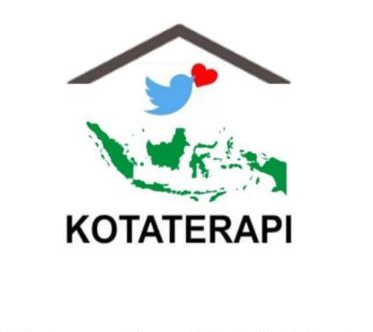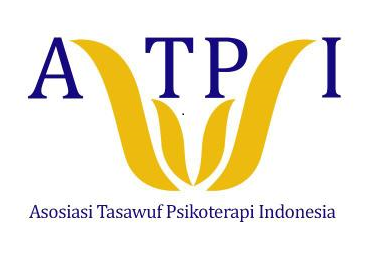Publication Ethics Statement
Publication Ethics and Publication Malpractice Statement
This statement clarifies the ethical behavior of all parties involved in the act of publishing an article in Journal of Sufism and Psychotherapy, including the authors, the editors, the peer-reviewers, and the publisher (Program Studi Tasawuf dan Psikoterapi Fakultas Ushuluddin, Adab, dan Dakwah UIN K.H. Abdurrahman Wahid Pekalongan). This statement is based on COPE's Best Practice Guidelines for Journal Editors.
Ethical Guideline for Journal Publication
The publication of an article in a peer-reviewed Journal of Sufism and Psychotherapy is an essential building block in developing a coherent and respected network of knowledge. It is a direct reflection of the quality of the authors' work and the institutions that support them. Peer-reviewed articles support and embody the scientific method. It is therefore important to agree upon standards of expected ethical behavior for all parties involved in the act of publishing: the authors, the journal editors, the peer reviewers, the publisher, and the society.
Program Studi Tasawuf dan Psikoterapi Fakultas Ushuluddin, Adab, dan Dakwah UIN K.H. Abdurrahman Wahid Pekalongan, as the publisher of this Journal, takes its guardianship duties overall publishing stages extremely seriously. We recognize our ethical and other responsibilities. We are committed to ensuring that advertising, reprint, or other commercial revenue has no impact or influence on editorial decisions. Besides, Program Studi Tasawuf dan Psikoterapi Fakultas Ushuluddin, Adab, dan Dakwah UIN K.H. Abdurrahman Wahid Pekalongan, and Editorial Board of Journal of Sufism and Psychotherapy will assist in communications with other journals and/or publishers is useful and necessary.
Publication Decisions
The editor-in-chief of Journal of Sufism and Psychotherapy is responsible for deciding which of the articles submitted to the journal should be published. The decision is based on the recommendation of the journal's editorial board members and reviewers. The journal abides by legal requirements as shall then be in force regarding libel, copyright infringement, and plagiarism. The editor confers with the editorial team and reviewers in making this decision.
Non-Discrimination
The editors and reviewers evaluate manuscripts for intellectual content without regard to race, gender, sexual orientation, religious belief, ethnic origin, citizenship, or political philosophy of the authors.
Confidentiality
The editor, reviewers, and editorial staff must not disclose any information about a submitted manuscript to anyone other than the corresponding author, reviewers, potential reviewers, editorial team, and the publisher, as appropriate.
Disclosure and Conflicts of Interest
Unpublished materials disclosed in a submitted manuscript must not be used by any editorial board members and reviewers in their own research.
Duties of Reviewers
Contribution to Editorial Decisions
The journal uses a double-blind review process. The reviewers advise the editor-in-chief in making the editorial decision. The editor-in-chief communicates with authors, as required, and improves the quality of their research papers.
Promptness
The journal editors are committed to providing timely reviews to the authors. If a reviewer does not submit his/her report on time, the paper is immediately sent to another qualified reviewer.
Confidentiality
Manuscript content is treated with at most confidentiality. The journal uses a double-blind process. Except for the editor-in-chief, the editors and reviewers cannot discuss a paper with any other person, including the authors.
Standards of Objectivity
The editors and reviewers are required to evaluate papers based on the content. The review comment must be respectful of the authors. The reviewers are required to justify their decision and recommendation.
Acknowledgment of Sources
Reviewers should identify relevant published work that the authors have not cited. The relevant citation should accompany any statement that an observation, derivation, or argument had been previously reported. A reviewer should also call the editor's attention to any substantial similarity or overlap between the manuscript under consideration and any other published paper they have personal knowledge of.
Disclosure and Conflict of Interest
Privileged information or ideas obtained through peer review must be kept confidential and not used for personal advantage. Reviewers should not consider manuscripts in which they have conflicts of interest resulting from competitive, collaborative, or other relationships or connections with any authors, companies, or institutions connected to the papers.
Duties of Authors
Reporting Standards
Authors should present an accurate account of the work performed and an objective discussion of its significance. Underlying data should be represented accurately in the paper. A paper should contain sufficient detail and references to permit others to replicate the work wherever possible. Fraudulent or knowingly inaccurate statements constitute unethical behavior and are unacceptable.
Data Access and Retention
Authors may be asked to provide the raw data in connection with a paper for editorial review. They should be prepared to provide such data within a reasonable time.
Originality and Plagiarism
The authors should ensure that they have written entirely original works, and if the authors have used the work and/or words of others, this has been appropriately cited or quoted. Papers found with such problems are automatically rejected, and authors are so advised.
The editor, however, double-checks each article before its publication. The first step is to check plagiarism against the offline databases developed by the Fakultas Ushuluddin, Adab, dan Dakwah UIN K.H. Abdurrahman Wahid Pekalongan. Secondly, against as much as possible online databases. A maximum of 15 % of similarities is allowed for the submitted papers. Should we find more than 15 % of the similarity index, the article will be returned to the author for correction and re-submission.
Multiple, Redundant, or Concurrent Publication
When a paper is submitted for possible publication, the submitting author makes a written statement that the paper has not been published not is currently under publication with any other journal. Simultaneous submission is considered unethical and is therefore unacceptable.
Acknowledgment of Sources
Proper acknowledgment of the work of others is required. Authors must cite publications that have led to the authors’ current research.
Authorship of the Paper
Authorship should be limited to those who have made a significant contribution to the research reported in the manuscript. The corresponding author has a responsibility to keep co-authors posted with the review process. If accepted, all authors are required to give a signed statement that the research work is their original research work.
Hazards and Human or Animal Subjects
If the work involves chemicals, procedures, or equipment with any unusual hazards inherent in their use, the author must clearly identify these in the manuscript.
Disclosure and Conflicts of Interest
All authors should disclose any financial or other substantive conflicts of interest in their manuscript that might be construed to influence the results or interpretation of their manuscript. All sources of financial support for the project should be disclosed.
Fundamental Errors in Published Works
When an author discovers a significant error or inaccuracy in his/her own published work, it is the author’s obligation to promptly notify the journal editor or publisher and cooperate with the editor to retract or correct the paper.
Corrections and Retractions
Journal of Sufism and Psychotherapy will issue corrections, retraction statements, and other post-publication updates, including Editor’s Notes on published content.
The following are categories of corrections and post-publication updates to peer-reviewed primary research and review-type articles and certain kinds of non-peer-reviewed article types. Substantial errors to Supplementary Information and Extended Data are corrected similarly to amendments to the main article. Except for Editor’s Notes, all categories below are bi-directionally linked to the original article and indexed.
Author Correction: An Author Correction may be published to correct an important error(s) made by the author(s) that affects the scientific integrity of the published article, the publication record, or the reputation of the authors or the journal.
Publisher Correction: A Publisher Correction may be published to correct an important error(s) made by the journal that affects the scientific integrity of the published article, the publication record, or the reputation of the authors or the journal.
Addendum: An addendum is generally published when significant additional information crucial to the reader’s understanding of the article has come to light following the publication.
Editor's Note: An Editor's Note alerts readers if the journal has initiated an inquiry in response to concerns raised about a published article. It is an online-only update, made only to the HTML version of the record of the published article. It is not indexed.
Retraction: An article may be retracted when the published work's integrity is substantially undermined due to errors in the study's conduct, analysis, and reporting. Violation of publication or research ethics may also result in a study’s retraction. The original article is marked as retracted, but a PDF version remains available to readers, and the retraction statement is bi-directionally linked to the original published paper. Retraction statements will typically include a statement of assent or dissent from the authors.
When making corrections to articles, in most cases, the original article (PDF and HTML) is corrected and is bi-directionally linked to and from the published amendment notice, which details the original error. For the sake of transparency, when changes made to the original article affect data in figures, tables, or text (for example, when data points/error bars change or curves require redrawing), the amendment notice will reproduce the original data. When it is impossible to correct the original article in both HTML and PDF versions (for example, articles published many years before the error is raised), the article will remain unchanged but contain bi-directional links to and from the published amendment notice.
















